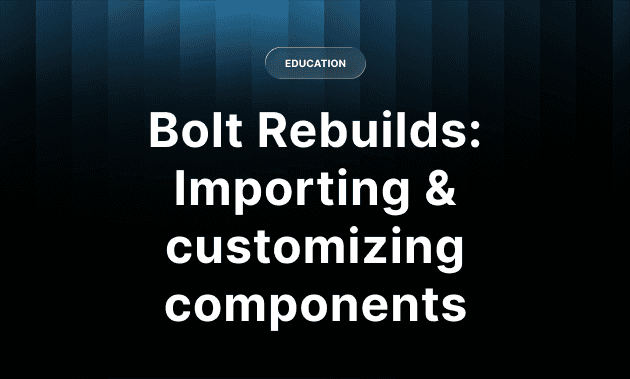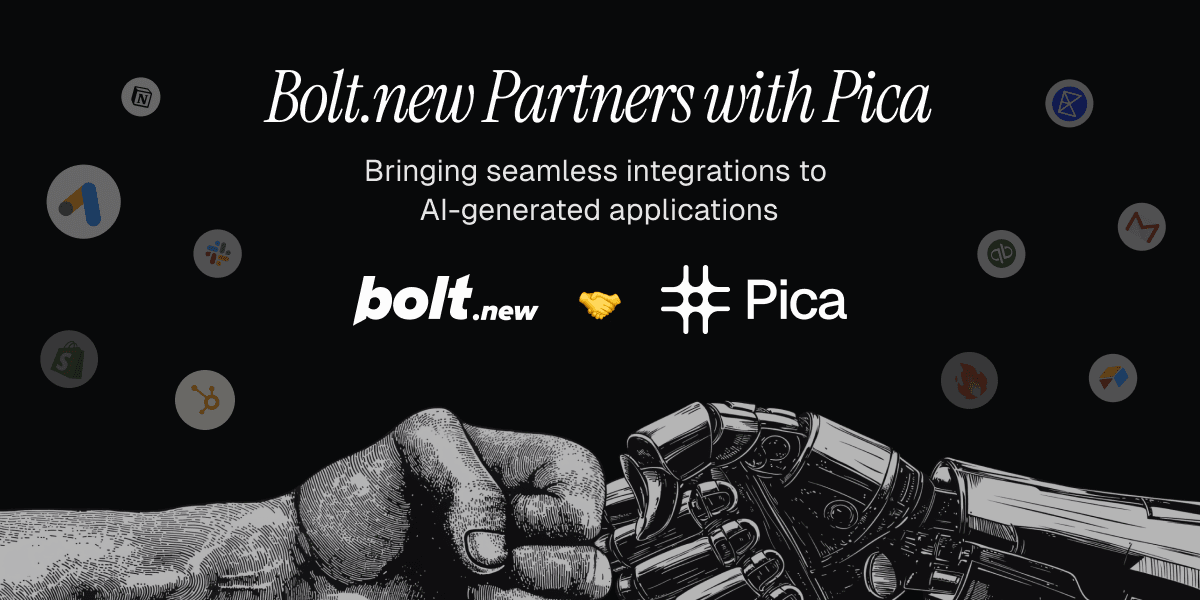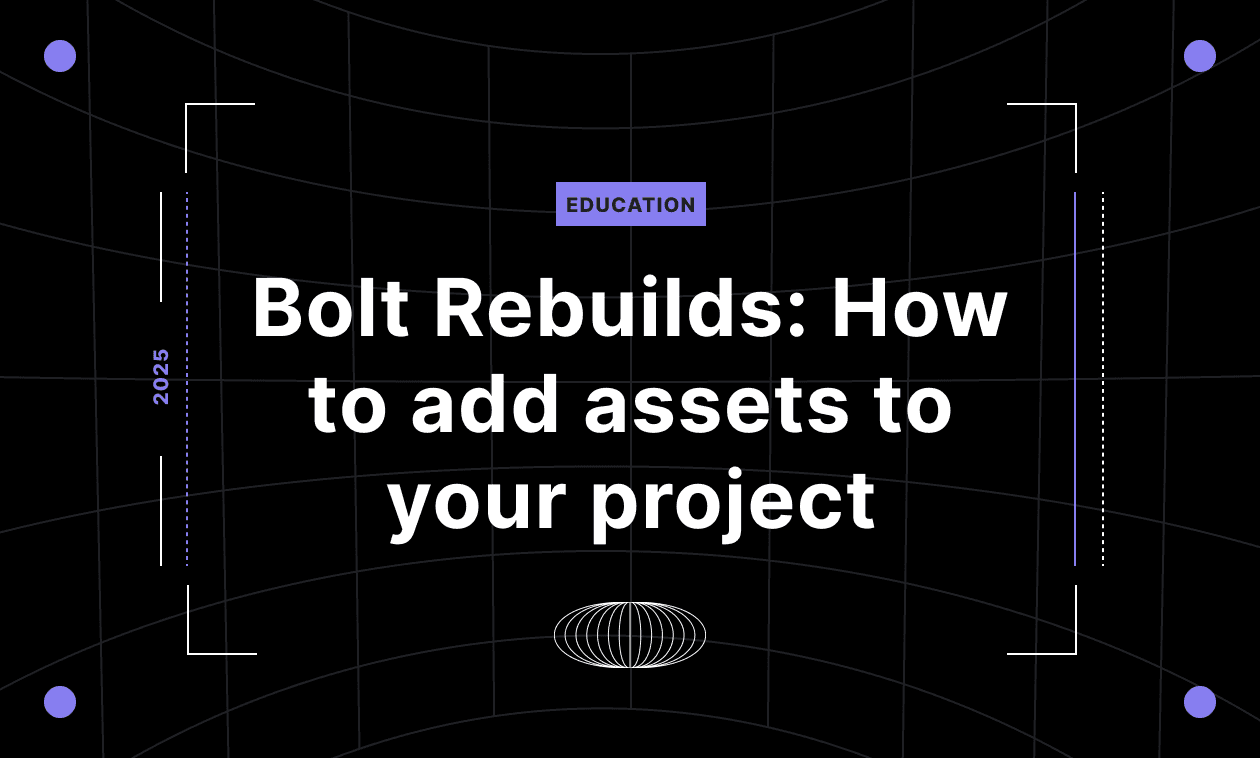Sep 5, 2025
Bolt projects you can create in a weekend, a day, or a single prompt
Five examples of projects Bolt builders created in a weekend, a day, or just a single prompt.
Projects
Millions have used Bolt to create everything from prototypes to functional products fast. Like, really fast.
If your plans fell through and you’ve got a free weekend (or even just a free hour), now is a good time to hunker down and create something special.
But first, let’s take a look at what’s possible. In this article, we’re spotlighting five projects built with Bolt in:
One weekend
One day
One prompt
Use them as inspiration, borrow their playbooks, or create something entirely unique in your spare time.
Built in: A weekend
Here are two fully-functional products AI enthusiasts built in just 48 hours.
Bubblin: Speaking truth to toxic work environments

Bubblin was born during the World’s Largest Hackathon, where over a 130,000 participants put Bolt to the test. Built in just 48 hours, the app was inspired by widespread stories of toxic work culture, including fear-based management, manufactured urgency, and punitive backlash for speaking honestly.
Bubblin’s mission is to provide employees with a safe, anonymous way to share feedback and give leaders insight into their teams' real pulse.
How they built it
With only two days on the clock, Frozie drafted a clear PRD with Gemini, then used Bolt’s Discuss mode to refine functionality step by step. They used Supabase for secure authentication for both employers and employees, as well as user data storage, feedback “bubbles,” and reactions (“sparks”).
Frozie connected Supabase Edge Functions to ElevenLabs to transform written feedback into voice, adding a powerful accessibility and emotional layer.
How it works
Employees anonymously submit feedback as “bubbles,” tagging topics and moods. Each bubble floats into a live “Bubble Flow,” where others can scroll, listen, or react by sparking ideas they resonate with. Voice integration lets users “hear” the collective workplace vibe in multiple languages.
For leaders, Bubblin aggregates the flow into dashboards that track sentiment, trending topics, and engagement while preserving anonymity and trust.
Voice Post: Turning ideas into high-performing LinkedIn posts

Voice Post is a weekend-built app that lets creators speak an idea and instantly get a polished, optimized LinkedIn post. It was built in 48 hours by no-code creator Christian Peverellil after a student in a coaching call admitted they were overwhelmed by posting on LinkedIn.
Anxiety and doubt about posting online is exceedingly common, even for experienced founders. It’s hard to know what good looks like, build confidence in your online persona, and carve out the time to create things people will like. Voice Post — which Christian showcases on YouTube — is designed to make posting as easy as talking.
How they built it
Christian used Bolt to create a sleek landing page with a hero section, benefits, features, a “how it works” flow, CTAs, and an FAQ. Next came the core functionality: recording a voice note, sending it through an automation, and returning a polished LinkedIn post.
The recorder was built in Bolt and connected to Make.com via a webhook that ran transcripts through GPT-4 for drafting and Claude 3.5 for editing, trained on high-performing LinkedIn patterns. A personal post library, image attachments, and editing tools rounded out the MVP, which was deployed to Netlify.
How it works
From the user’s perspective, the flow is simple. After hitting “Get started,” you record a short voice memo describing your idea. The transcript runs through Make, where GPT-4 drafts a post with a hook, body, and CTA. Then, Claude 3.5 refines tone and formatting.
Built In: A day
Below is an example of how companies can use Bolt to iterate faster than ever by building the blueprint for their next cash cow in one day.
A solid SaaS MVP
Built by the team at Software on the Road, the goal with this project was to create a fully functional SaaS MVP prototype in a workday.
For non-technical founders, speed equals survival. This team wanted to prove that instead of spending weeks in planning mode, you can have a working, shareable product the next day that you can actually show investors, teammates, and early users.
How they built it
The team started with a focused idea: strip the product down to its single core workflow. They then came up with a prompt describing the app, user roles, and the essential actions it needed to support.
From there, they iterated rapidly: refining UI copy, seeding fake data to make it feel real, and polishing flows until the prototype felt like something you could actually use. By the end of the day, they had a clickable SaaS app live on the web.
How it works
This MVP includes user authentication, database models, and dynamic UI routes. Users of the prototype can sign up, log in, navigate workflows, and interact with sample data as if it were a production app.
With Bolt, this team generated a trust-building, feedback-ready prototype in a day. Once the concept was validated, the team transitioned to custom software, using the prototype as a living blueprint.
Built in: A prompt
This is where things get really interesting. These two projects were one-shotted.
Pressme.lol: A simple, funny (and furry) micro app

This app wasn’t just built in less than 48 hours. It was built in a single prompt.
Pressme.lol is a playful micro-app designed around a simple premise: a cat that gets annoyed when you flip its switch.
How they built it
The entire app was generated from a single Bolt.new prompt. The creator also connected a Supabase database to persist the global counter that tracks how many times the switch has been pressed and used Netlfiy to handle deployment.
The hardest part was coming up the tiny idea in the first place and finding a short, funny domain that matched the frivolous, self-aware vibe of the app itself.
How it works
Playing this game is incredibly simple. Go to Pressme.lol. You’ll be greeted by a simple on/off switch. Every time you toggle the switch, the global counter ticks up by one, and a cat reaches out with his little paw to flip the switch back to its original position.
It’s as simple as it is adorable and invokes the micro games of yore, back when the internet was littered with similarly silly, harmless, delightful interactive experiences.
A prototype for EduVibz: A new way to learn

EduVibz is an educational music streaming app designed to make learning fun and memorable. While the full platform is currently in development, the initial prototype that sparked the idea was generated from a single prompt. Inspired by the founder’s son, who struggles to focus but remembers every song lyric, EduVibz transforms school subjects into catchy, repeatable tunes.
How they built it
The founder used Bolt to generate the app in one shot, focusing on delivering a polished user interface with core streaming, playlist, gamification, and authentication features. The single prompt resulted in a fun, functional demo for students and parents and serves as an early, compelling proof point for the much larger platform to come.
How it works
EduVibz lets students browse songs by grade, subject, or topic, then stream them directly in-app. Users can build playlists, track their learning through gamified elements, and log in to personalize their experience.
The app emphasizes simplicity, with a straightforward design that’s easy for kids and parents alike to navigate, making it less like a school tool and more like a streaming service.
How much time you got?
These creators didn’t wait for the perfect moment to make something interesting. They found a chunk of free time, mined their best ideas for something viable, and got to work.
If you’ve been sitting on an idea, here’s your nudge. You can go from idea to launch in a feverish 48 hours, or you can ship something on your lunchbreak.
Your turn. What’s on your mind? Build it with Bolt.











